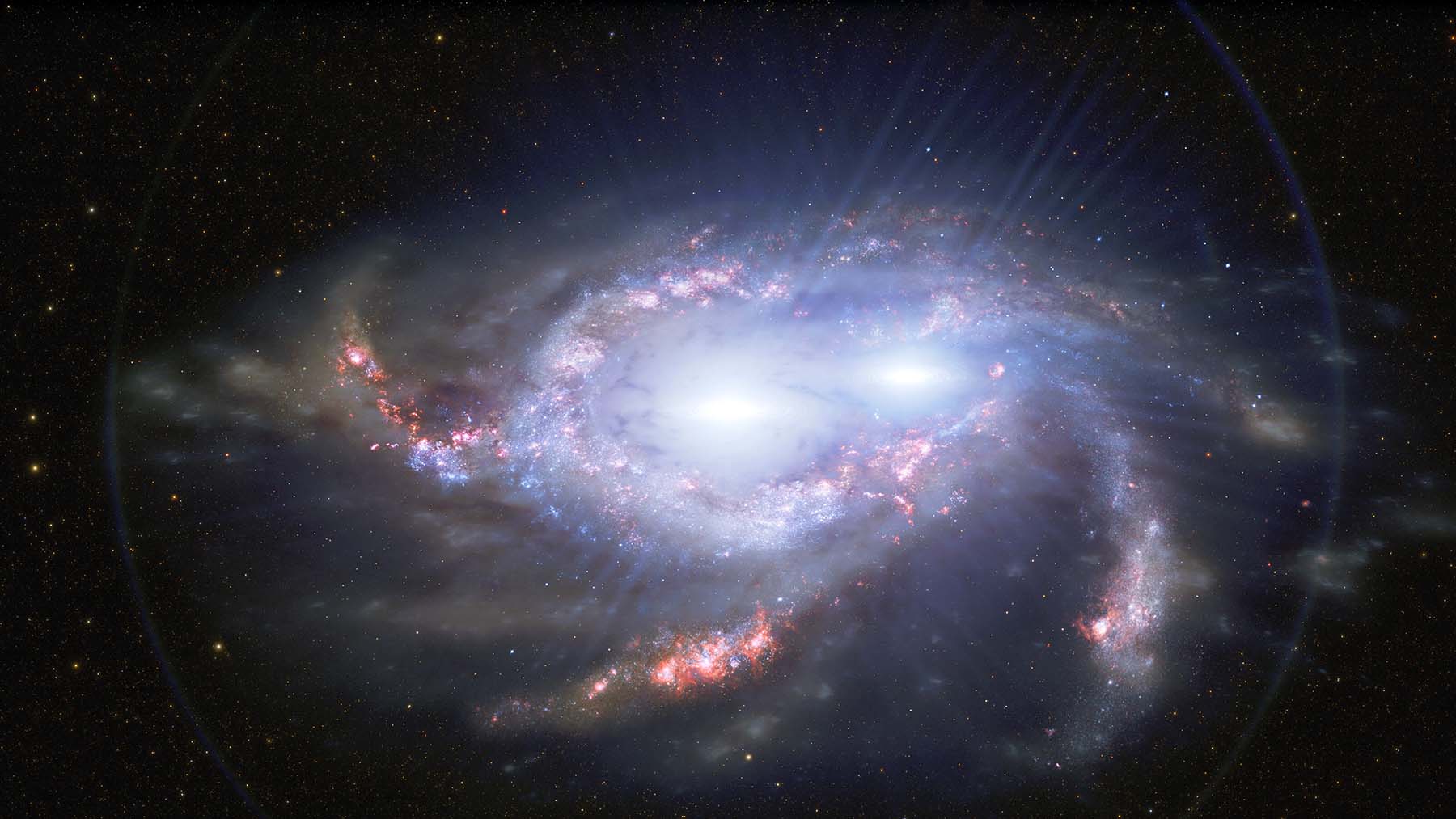NOIRLab: Black Hole Pairs Found in Distant Merging Galaxies

Astronomers have discovered two pairs of quasars in the distant Universe, about 10 billion light-years from Earth. One of the distant double quasars is depicted in this illustration. Credit: International Gemini Observatory/NOIRLab/NSF/AURA/J. da Silva
Astronomers have found two close pairs of quasars in the distant Universe. Follow-up observations with Gemini North spectroscopically resolved one of the distant quasar pairs, after their discovery with the Hubble Space Telescope and Gaia spacecraft. These quasars are closer together than any pair of quasars found so far away, providing strong evidence for the existence of supermassive black hole pairs as well as crucial insight into galaxy mergers in the early Universe.
The quasars in each of the two pairs are separated by just over 10,000 light-years, suggesting that they belong to two merging galaxies [1]. Double quasars are scientifically interesting but rare objects — particularly in the most distant reaches of the Universe — and these are the most distant quasars found that are so close together. We see these quasar pairs as they existed roughly 10 billion years ago [2].
“We estimate that in the distant Universe, for every one thousand quasars, there is one double quasar. So finding these double quasars is like finding a needle in a haystack,” commented Yue Shen, an astronomer at the University of Illinois and lead author of the paper announcing this discovery.
Quasars are the intensely bright cores of distant galaxies, powered by the feeding frenzies of supermassive black holes [3]. These energetic objects profoundly affect galaxy formation and evolution, making observations of quasar pairs in the early Universe a unique way for astronomers to investigate the evolution of merging galaxies. Quasar pairs also provide a natural laboratory in which to study the processes leading to the formation of binary supermassive black holes.
“This truly is the first sample of dual quasars at the peak epoch of galaxy formation that we can use to probe ideas about how supermassive black holes come together to eventually form a binary,” elaborated team member Nadia Zakamska of Johns Hopkins University.
Finding the two quasar pairs was a daunting challenge, requiring a new method that combined data from several space and ground-based telescopes, including the international Gemini Observatory, a Program of NSF’sNOIRLab. Quasar pairs at such large distances can only be resolved by sharp-eyed telescopes such as Hubble or Gemini, but observing time on these telescopes is too valuable to use it to sweep through large areas of the night sky in search of rare astronomical objects.
To focus their search, the researchers first identified 15 quasars for further investigation using the Sloan Digital Sky Survey, a three-dimensional map of objects in the night sky. From this list of 15 quasars, they then used observations from the Gaia spacecraft to identify four potential quasar pairs [4]. Finally, these candidates were imaged with the Hubble Space Telescope, which visually resolved two quasar pairs, giving this novel method a success rate of 50%.
The team then used the Gemini Multi-Object Spectrograph (GMOS) on Gemini North (located on Maunakea in Hawai‘i) to verify the discovery and further investigate one of the quasar pairs [5]. The combination of the sensitivity of GMOS and superb observing conditions allowed the team to resolve individual spectra from both quasars in the pair [6]. These spectra provided the team with independent measurements of the distance to the quasars and their composition, as well as confirming that the two quasars are indeed a pair rather than a chance alignment of a single quasar with a foreground star.
